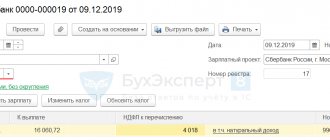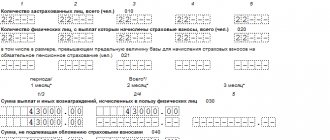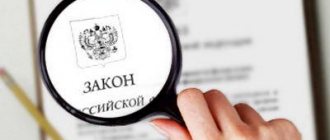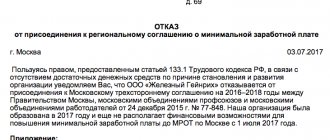In the context of globalization and open borders, foreign business trips of employees of Russian government agencies and commercial companies have long ceased to be an extraordinary phenomenon. Foreign business trips are governed by essentially the same rules as domestic business trips. But there are a number of nuances associated specifically with sending an employee to another state.
- 2 Registration of a foreign business trip
2.1 Required documents2.1.1 Order to send an employee on a business trip abroad
- 2.1.2 Photo gallery: sample of filling out the T9a form for three seconded employees
- 2.1.3 Service assignment and travel certificate
Who can be sent on business trips abroad and who cannot?
The restrictions regarding employee business trips abroad are the same as for domestic trips.
It is strictly prohibited, as in the case of business trips within Russia, to send the following employees abroad:
- pregnant women;
- employees under 18 years of age, except for creative workers and athletes;
- employees on an apprenticeship contract, if the foreign business trip is not related to apprenticeship;
- disabled people if the business trip contradicts their individual rehabilitation program;
- registered candidates for elections during the latter period.
An employee who has a child under three years old can be sent on a business trip abroad only with her written consent
Written consent for foreign or domestic business trips is required from the following categories of workers:
- women raising children under three years of age;
- single mothers, fathers or guardians of children under five years of age;
- parents or guardians of disabled children;
- workers caring for sick relatives based on a medical report.
All other employees can be sent on business trips, including foreign ones, without any restrictions.
Payment of travel expenses in 2021 in budgetary institutions
What do business trip expenses include? They include accommodation in a hotel or rented apartment, payment for travel by train or other means of transport, as well as a number of other types of expenses agreed upon with the management of the organization or enterprise.
When asked whether it is possible to pay pharmacy bills in case of illness or other unexpected expenses, the answer is simple. Of course not. The same applies to expenses such as packing luggage, even if it is related to work matters. By the way, when asked whether an electronic ticket is a document according to which its cost can be returned, the answer can be yes, but in this case the person should present the electronic ticket itself and the boarding pass.
Full information can be obtained from the KOSGU codes, which explain in detail both taxation and insurance premiums in business travel situations.
It should be understood that all money for travel expenses is accountable, so you will have to account for the money received in budgetary institutions to the last penny. If for any reason there is an overspend, then a deduction from wages will certainly follow. The accountable person can also expect a government resolution according to which the daily allowance limit will be abolished. Needless to say, such a situation is unlikely, and their sizes have not changed since January of this year.
Often, payment of money for a business trip is not made in full, but only partially, representing an advance, which includes the estimated costs of travel and accommodation.
To receive cash, a cash receipt must be drawn up and submitted.
Duration of business trip abroad
The legal requirements for business trips both in Russia and abroad in 2021 are the same and do not have a clearly defined framework. By default, a business trip cannot be less than one day and must have a deadline. If it cannot be established, it is determined approximately.
For example, if an employee goes on a business trip that can last either a week or a month, it is advisable to initially arrange a business trip for a week, and subsequently extend it as necessary.
Even if the business trip is issued for a hundred years, with all the absurdity of such a decision, there is nothing to complain about from the standpoint of the law. However, it is doubtful that such an option would be in the interests of the company. After all, she must pay the advance to the employee immediately and in full.
During the Soviet period, central newspapers could send their employees abroad to work as their own correspondents. For example, in Komsomolskaya Pravda the standard period for such a business trip was three years.
The main document that stipulates the duration of a trip abroad is a business trip order. It is on this basis that the advance payment is calculated, which must be paid to the posted worker before departure.
Daily allowance for one-day business trips
The employer, based on expediency, may decide to return the employee daily from a business trip to his place of residence. At the same time, he must take into account the nature of the task, distance, transport component, and whether the employee has rest time. This is a one day business trip. The employee's daily allowance for such trips is not accrued.
The Supreme Arbitration Court, on the basis of the Labor Code of the Russian Federation, as well as the Ministry of Finance of Russia, in several of their letters, determined that the organization has the right to compensate for expenses associated with travel, meals, telephone conversations and other expenses incurred by an employee when sending him on a one-day business trip.
All expenses of the employee for the performance of his labor functions during such a business trip, which are compensated by the employer, must have supporting documents. They are included in full, without limitation (provided that they are economically justified), in expenses that reduce the tax base for income tax.
If the documents are missing, and the company compensated for these costs on the basis of Art. 217 of the Tax Code of the Russian Federation, they, like daily allowances within certain limits (700 rubles in Russia and 2500 rubles abroad) do not form income for an employee of the organization. Otherwise, it is necessary to withhold personal income tax on amounts exceeding the established amount.
The work of employees with a traveling schedule or on the road is not considered a business trip.
Payment and confirmation of expenses on business trips abroad
Along with the standard set of expenses for business trips in Russia, including compensation for travel there and back, costs of renting accommodation, daily allowance and other expenses agreed upon with the employer, when traveling abroad the following expenses of the business traveler are subject to additional compensation:
- production of a foreign passport;
- costs for obtaining a visa (consular, visa fees, visa center services, etc.);
- airport and port taxes.
The biggest difficulty is always compensation and confirmation of expenses in foreign currency incurred by the employee directly while staying abroad. For example, expenses for hotels, telephone conversations, travel around the country of destination, if the employee was sent to several cities, or to different countries, when to several countries, purchases made for the needs of the company (for example, the employee was sent to an international exhibition and there purchased the employer is interested in product samples), etc.
There are two ways to confirm such expenses:
- The advance is paid to the employee in rubles, he exchanges this amount for foreign currency and submits a certificate of exchange to the accounting department in the package of reporting documents for the business trip. Expenses are then recognized in the currency in which they are reflected in the foreign supporting documents and converted into rubles at the rate specified in the exchange certificate. For example, an employee received an advance of 55 thousand rubles and purchased dollars at the rate of 1:60. His confirmed foreign exchange expenses amounted to one thousand dollars. At the exchange rate from the exchange certificate, it will be 60 thousand rubles. Since he already received 55 thousand before leaving, the company still owes him five thousand rubles. The disadvantage of this method is that when traveling to countries where currencies other than the dollar or euro are used, it may be problematic to purchase the necessary currency units, for example, Kazakh tenge, Belarusian rubles, Polish zlotys, Swedish crowns or British pounds sterling. especially outside Moscow.
- When the employee does not have a certificate of currency exchange (and the advance can be given to him immediately in foreign currency - the law allows this), expenses are recognized in the currency in which they were incurred, based on primary supporting documents (invoices, tickets, checks, etc.) . p.) and are converted into rubles at the Bank of Russia exchange rate on the date of approval of the advance report.
Daily allowances for trips abroad are calculated in the currency in which they are stated in the company’s Business Travel Regulations.
For example, an employee was posted to the Czech Republic. Before the trip, he prepared a passport and applied for a visa using the services of a visa center. He incurred all these expenses in rubles. He also paid for the round-trip plane ticket in rubles. Daily allowances in the Business Travel Regulations are indicated in dollars. And in the Czech Republic he paid for a hotel with crowns. The advance for the business trip was transferred to the employee’s card in rubles; he did not make an exchange, only withdrew cash or paid by card, including abroad.
In this case, the calculation is carried out according to the following scheme:
- All expenses that the employee, according to supporting documents, incurred in rubles are recognized in rubles.
- Hotel costs according to the invoice are converted from Czech crowns into rubles at the Bank of Russia exchange rate on the day the advance report is approved.
- Daily allowances are also converted from dollars into rubles at the Bank of Russia exchange rate on the day the advance report is approved.
- The total amount of confirmed expenses in rubles is compared with the advance payment issued.
What is payable and what is not
In the understanding of the majority, a business trip is a trip of an official nature, which involves the performance of official duties. Therefore, all expenses incurred by the employee must be fully compensated. In this case, the employer is obliged to fulfill its obligations in the following areas:
- Cover the employee's full cost of travel from the point of departure to the point of destination;
- Compensate for accommodation while the subject is away from his place of residence;
- Cover other expenses associated with a person’s stay in another territorial location.
That is why there is such a thing as daily allowance. Per diem is compensation that an employer pays to its employee to cover the individual's additional expenses. Of course, there are standards for regulating daily payments. But no one forbids setting independent amounts of such payments. At the moment, the amount of daily payments is set as follows:
- 700 rubles – for business trips in Russia;
- 2500 rubles - for business trips outside the state.
You can read more information about the amount of daily allowance and how you can set your daily allowance at an enterprise HERE
But then let’s try to figure out what may be subject to compensation and payment and what not.
Payment of daily travel expenses in 2021 includes directly three components that were mentioned earlier: travel, accommodation and other costs. So, travel and accommodation costs are paid in full at the actual cost of the services provided. But in order for the payment to be made, it is necessary to provide supporting documents to the company’s accounting department.
Supporting documents in this case may be:
- Invoice;
- Photocopy or original of the travel ticket;
- Tax invoice;
- A copy of the state registration certificate of the hotel where the subject stayed;
- Other.
In other words: whatever expenses a person has incurred, those will be reimbursed to him. Another thing is that there are unspoken restrictions at every enterprise that limit the amount of such expenses. For example, a room cannot cost more than 2,500 rubles, travel is a compartment or reserved seat, but not luxury class, etc.
But if travel and accommodation for payment must be confirmed with documents, then to receive daily allowance no documents are needed. The employer is obliged to make such payment anyway. Whether it will be within the maximum limit or not remains at the discretion of the management of the legal entity.
We remind you that if the amount of the travel payment is higher than the established maximum, then you will have to withhold personal income tax.
You can often come across the following question: if an employee has received reimbursement for expenses related to business trips and was also paid daily allowance, does he need to pay for the working day?
The answer is clear: yes, in addition to the daily allowance, the enterprise is obliged to pay him in full for each day of the business trip based on the payment for one day of work, regardless of the amount of the daily payment. In this case, both the working day, the day of departure, and the day of arrival are paid in full.
Daily allowance for business trips abroad in 2018
The Tax Code of the Russian Federation sets the maximum amount of daily allowance for business trips abroad, which is not subject to taxation, at the level of 2.5 thousand rubles per day. But this does not mean that it is impossible to pay them in excess of the stated amount. It is possible, but there will be tax costs.
The employer himself is free to pay his employees at least 1 million rubles or even dollars per day. As long as he doesn't end up going broke.
The legislation stipulates only one requirement for the company regarding daily allowances, including for business trips abroad - their amount must be indicated in the local regulations. Usually, the Regulations on Business Travel are used for this, but it can also be done with a separate order approving the amount of daily allowance.
At the same time, the company has the right to differentiate the amount of daily allowance depending on the rank of the employee. For example, 20 dollars a day for an ordinary specialist, 35 for a middle manager and 50 for a top manager. A similar policy is appropriate if daily allowances are calculated in rubles.
There is unofficial information that when one of the deputies of the State Duma of previous convocations traveled abroad, the people’s choice himself was paid a daily allowance at the rate of $500 per day, and ordinary members of his retinue were paid $100 each.
It seems logical to differentiate these compensations depending on the country of destination. After all, if we designate the same daily allowances for the UK and Tajikistan, then in light of the difference in prices between these countries, there will be no end to those who want to go to Dushanbe and get a chance to bring the lion’s share of the allocated amount back without the obligation to return it to the cash register, but to London, where those You won’t run away with the money, no matter how much you have to send it as punishment.
Various foreign business publications, for example, the British The Economist, regularly publish ratings of the most expensive countries and cities in the world. Based on these data, large international companies determine the amount of compensation for their employees sent to different cities and countries, both for long periods and for short business trips.
It should also be taken into account that daily allowances, according to the standard approved by the company for foreign business trips, are paid exactly for those days that the employee actually spends outside of Russia. So, if he went on a foreign business trip, for example, by train or personal car and crossed the border not on the day of departure, during the time he was traveling around the country, he is entitled to daily allowance, but according to the norm for business trips in Russia.
Daily allowances at the rate for foreign business trips are accrued to the business traveler from the moment he crosses the border according to the stamp in the international passport. Even if he drove around Russia all day, and entered a foreign country at 23:59, this rule still applies. But on the way back, starting from the date of entry into Russia, daily allowances are already accrued within Russia.
For example, on January 10, an employee left Moscow on a business trip to Finland by train. He crossed the border in the morning of the next day, spent five days in Helsinki, and on the evening of January 16 he went back by train and entered the Russian Federation on the morning of January 17. It turns out that he spent a total of eight days on a business trip - from January 10 to January 17 inclusive (on a business trip abroad, as well as when traveling around Russia, the days of departure and arrival are considered the calendar days of departure and arrival of the employee from/to the starting point). Of these, two days - January 10 and 17 - are paid per diem according to the standard for domestic trips, and the remaining days - at the rate approved by the company for Finland.
Let’s assume that the daily allowance for trips around the Russian Federation in a company is 500 rubles per day, and for Finland - 2000 rubles.
This means that the calculation must be carried out according to this scheme:
- 2x500=1000 - daily allowance for days of departure and arrival.
- 6x2000=12000 - daily allowance for the time spent in Finland.
- 12000=1000=13000 - total amount of daily allowance.
In total, the employee is entitled to 13 thousand rubles in daily allowance.
Let's consider another option. A Moscow company sent an employee to Bratislava and Vienna. He flew from Moscow by plane to Bratislava, spent three days there, in the evening of the third day he went by train to Vienna, where he arrived on the same day, spent the night in a hotel and spent three days in the Austrian capital, flying to Moscow at lunchtime on the third day. The daily allowance for Slovakia in the company is 40 dollars per day, for Austria - 50, for trips around Russia - 500 rubles per day.
So, our employee crossed the border with Slovakia on the day of departure. This means that he is entitled to daily allowance for the first day of his business trip according to the Slovak norm. The picture is similar for the next day, which he spends entirely in Slovakia.
But on the evening of the third day he went to Vienna and on the same day he was already there (the drive from one capital to another is no more than two hours). This means that he is entitled to daily allowance at the Austrian rate. The same schedule for the next two days.
The exception is the last day of the business trip - having departed from Vienna by plane, he flew by plane that day, our employee was in Moscow on the same day. And since this happened on the way back, he has the right to count only on domestic Russian daily allowances for the last day of his business trip.
So, let's start the calculation:
- 40x2=80 - daily allowance according to the Slovak norm.
- 50x3=150 - daily allowance for the stay in Vienna.
- 500x1=500 - daily allowance for the last day of a business trip, calculated at the domestic Russian rate.
- 80+150=230 - total daily allowance in foreign currency for the duration of your actual stay abroad.
- In total, we owe the employee 230 dollars and 500 rubles. Further calculation depends on the currency in which we gave him the advance and whether he has a certificate of exchange, if in rubles. Conversion of dollars into rubles for final reconciliation with the amount of the ruble advance is carried out at the rate indicated in the exchange certificate, or the rate of the Bank of Russia on the day of approval of the advance report.
A standard ticket on most European railways only entitles you to stay on any train on a certain day on a paid section of the route. This means that it cannot serve as confirmation of crossing the border, because the time of arrival is not indicated in it. A foreign passport will not help us either, since Slovakia and Austria are part of the Schengen zone, and there is no passport control at the border between them. To solve the problem, you can recommend that the employee make a reservation for a specific seat on a specific train, which is done for a fee (but these are also travel expenses that the company is obliged to reimburse him) or travel by bus - tickets are sold for a specific flight indicating the departure time and arrival.
In the last example considered, it will be more profitable for the company if the employee spends the night not in Vienna, but in Bratislava, where there are cheaper hotels, and goes to Austria in the morning. This would save $10 on his per diem. But no one has the right to force an employee to do exactly that.
Payment of travel allowances abroad
In order to calculate the amount of daily payments for an employee who was staying outside the territory of the state, it is necessary to multiply the average daily rate for such an expense item by the number of travel payments. At the same time, the main feature when calculating travel allowances is the calculation of the number of days that will be counted towards the business trip. The main guideline for calculation is not the travel ticket (with the exception of CIS countries), but the mark in the passport.
And here the question arises: is the time when the employee is on the territory of Russia paid, because sometimes it is necessary to get to the border itself. Yes, it is paid, but only at the rate of a regular business trip.
And to make it more clear, let's look at an example:
On May 23, employee Kirichenko S.P. was sent on a business trip to the Czech Republic. In order to get to his destination, the employee traveled by train from his city to Moscow, and then by train from Moscow to the Czech Republic. According to the mark in the passport, the train crossed the Russian border on May 25 in the morning. The employee returned back on May 29, crossing the border was recorded on May 30. Subject arrived home on May 31st. How are daily allowances calculated?
Calculation:
- We determine the number of days that the employee stayed in Russia: since the border crossing was on May 25 and 29, these days will be counted as a business trip abroad, so the period from May 24 to May 30 must be paid at the foreign rate. We get 7 days of 2500 rubles, that is, 17500 rubles;
- We determine the number of days that the employee is allotted for a business trip within the state: May 23 and May 31, that is, 2 days. We get 2*700 = 1400;
- The total amount of compensation is 17500+1400 = 18900 rubles.
The example is given taking into account the fact that the enterprise has established maximum daily allowances that are not subject to personal income tax withholding.
Similar articles
- Calculation of travel allowances in 2021 with examples
- Standard daily travel expenses in 2021
- Payment of daily travel expenses in 2021
- Payment of daily travel expenses in 2021
- Calculation of daily allowances for business trips in 2021
How to reflect expenses for a business trip abroad in 2018 in an accounting report
The need to reflect currency payments in the accounting department is the biggest headache for employees of the relevant departments of a company sending workers abroad.
Recommendations from experienced professional accountants will help them cope with this difficult task.
...As for an advance in cash, Law No. 173-FZ does not establish a direct permission or prohibition on the issuance of such an advance from the cash register. On this basis, the Presidium of the Supreme Arbitration Court of the Russian Federation, in Resolution No. 10840/07 of March 18, 2008, concluded that such an operation is not a violation of currency legislation. The advance amount issued is reflected in accounting in rubles at the official exchange rate of the Central Bank of the Russian Federation on the date of issue of the advance (clauses 4, 5, 6 PBU 3/2006 “Accounting for assets and liabilities, the value of which is expressed in foreign currency”, approved by Order of the Ministry of Finance of Russia dated November 27, 2006 N 154n). The amount of currency in accounting will be reflected both at the Central Bank exchange rate and at the denomination of the currency (this can be organized by introducing an additional accounting register, recording it as a fraction). Exchange rate differences between the purchase rate and the Central Bank rate are reflected as part of other income and expenses (clause 11 of PBU 10/99 “Expenses of the organization”, approved by Order of the Ministry of Finance of Russia dated 05/06/1999 N 33n, and clause 7 of PBU 9/99 “Income organization", approved by Order of the Ministry of Finance of Russia dated 05/06/1999 N 32n) on the date of acquisition of currency, as well as on the date of preparation of financial statements (at least once a month). An organization can establish in its accounting policy more frequent “revaluations” of currency. In tax accounting, exchange rate differences relate to non-operating expenses (clause 6, clause 1, article 265 of the Tax Code of the Russian Federation) or non-operating income (clause 2, article 250 of the Tax Code of the Russian Federation). In accounting, transactions related to the issuance of a foreign currency advance to an employee and overexpenditure will be reflected in the following entries (all amounts in rubles at the Central Bank exchange rate on the date of the transactions, using the example of currency transactions in euros): Debit 50, subaccount “Euro”, Credit 52 - currency was received from a foreign currency account in a bank to the cash desk; Debit 71 Credit 50, sub-account “Euro” - a foreign currency advance was issued to the employee for reporting (the same entry is used to issue the amount of overexpenditure in foreign currency); Debit 50, subaccount “Euro”, Credit 71 - the balance of unspent accountable funds was returned to the cash desk; Debit 91, subaccount 2 “Other expenses”, Credit 71 - reflects the negative exchange rate difference on travel expenses (clauses 11 and 13 of PBU 3/2006). Or: Debit 71 Credit 91, subaccount 1 “Other income” - reflects the positive exchange rate difference on travel expenses. Please note that subaccounts to account 50 “Cashier” are opened for each currency used.
Mosbukhuslugi
https://www.mosbuhuslugi.ru/material/zagranichnye-komandirovki-uchet-zatrat
How is a business trip paid in 2021?
Accommodation and travel must be paid by the employer
Payment for travel allowances is regulated by the Labor Code of the Russian Federation, the Tax Code of the Russian Federation, Government regulations (the key one is Resolution No. 749 of October 13, 2008), as well as local regulations. Local regulations must specify payment issues that are not regulated by law. For example, what hotel to pay for the boss and an ordinary employee, what class to choose on the plane (economy, business), whether to pay for food, baggage, the maximum daily allowance, etc. And also issues of payment for travel allowances can be specified in a collective labor agreement or individual labor agreements.
Payment for a business trip based on the employee’s average earnings: calculation procedure
While on a business trip, the employee is paid a salary for the days he actually works. However, the salary size is determined not by salary, but by average earnings for the year. To calculate average earnings, you need to divide the total amount of wages paid for the last calendar year by the number of days actually worked. Vacation pay, sick leave and various social benefits are not taken into account, nor are days when the employee was absent, including days of downtime. If an employee has not yet worked for a year, his average salary is calculated based on the number of days actually worked and the salary received for them.
An example of calculating average earnings for less than a full year of work
Test pilot L.A. Gavryushin works at the Speed of Light enterprise in Petropavlovsk-Kamchatsky from September to November, and on December 1 he will go on a business trip to Edinburgh. During his work, he was sick once for five days (in September). In September and October his salary was 150 thousand rubles, and in November - 200 thousand rubles. Work schedule 5/2. In September there were 21 working days, of which 16 were actually worked (less due to illness), so for September L.A. Gavryushin received a salary of 114.3 thousand rubles (150*16/21). In October and November there were 22 working days. In October, the test pilot received financial assistance of 20 thousand rubles.
Average salary in L.A. Gavryushin for calculating travel allowances will be (114300+150000+200000)/(16+22+22)=464300/60=7738 rubles. This is exactly the salary a test pilot will receive for each working day on a business trip. Please note that financial assistance of 20 thousand rubles is not taken into account in the calculations.
Video: payment for work on a business trip
When is an additional payment for travel allowance possible?
In some situations, an employee may receive additional pay while on a business trip - usually if there is a significant difference between the average annual earnings and salary.
For example, A.N. Sidorov was appointed deputy head of the department a month ago, and before that he was an ordinary specialist. It turns out that when calculating travel allowances, the salary of an ordinary employee for 11 months and the salary of a deputy manager for one month will be taken into account. At the same time, on a business trip A.N. Sidorov will perform the duties of a deputy, and if we are guided by the standards, then his salary should be lower - slightly more than that of an ordinary employee. This is contrary to common sense, which is why enterprises often provide additional payments up to the current salary.
How are night and overtime hours worked on a business trip paid?
With the consent of the employee, he may be required to work at night and overtime. For this he is entitled to compensation: for the first 2 hours - one and a half times the salary, for subsequent hours - double. But also, instead of compensation, the employee can receive additional rest.
An employee should not be required to work overtime too often: no more than four hours for two days in a row.
How is a business trip paid on weekends and holidays?
If an employee worked on weekends and holidays, then firstly, his permission is required. Secondly, there are two types of compensation for work on days off:
- double wages (more is possible);
- standard pay and time off after returning from a business trip.
An employee has the right to independently choose what is more important to him - double salary or an additional day off.
An example of salary calculation taking into account work on weekends
Boiler equipment maintenance specialist P.S. Komissarov, who works at the Kotel Masters enterprise in St. Petersburg, was sent to Moscow on a business trip for nine days, of which seven were working days. Since the assignment on the business trip was urgent, P.S. Komissarov worked on the weekends - January 13 and 14. P.S. Komissarov chose increased wages as compensation. With an average salary of 3 thousand rubles a day, he was paid 3 thousand rubles for 5 days (15 thousand rubles) and 6 thousand rubles for two days off (another 12 thousand rubles). In total, his salary on a business trip amounted to 27 thousand rubles (transportation costs and accommodation were paid additionally).
Video: paying for a business trip on a day off
https://youtube.com/watch?v=czbTsEskspY
Payment for work of piece workers on a business trip
With piecework wages, wages are calculated based on the average wage per hour at your enterprise.
Example of payment to piece workers
Turner of the sixth category I.K. Komissarzhevsky grinds an average of 4,320 parts per month at his main place of work. For each detail he receives 10 rubles. For the shift I.K. Komissarzhevsky turns 240 parts. The shift lasts six hours. We calculate the turner's productivity per hour: 240/6 = 40 parts. For 40 parts I.K. Komissarzhevsky receives 400 rubles (40*10), this is his earnings per hour. The turner was sent from Simferopol to Feodosia for a week, which included five working days. On a business trip I.K. Komissarzhevsky works on the same schedule - six hours. His salary per shift will be 400*6=2400 rubles. For five work shifts, a turner will receive 2400*5=12 thousand rubles.
Payment for shift work
When working in shifts, the company has a schedule for all employees. You need to rely on it when working on a business trip. If an employee works on days that are not specified in his schedule, he receives payment for them as for a day off - at least at a double rate.
Payment calculation example
Hot shop cook V.V. Alexandrov works at the “Delicious Buns” bakery on a 2/2 schedule. V.V. Alexandrov was sent on a business trip from Sevastopol to Krasnodar for 10 days - from August 1 to 10. His average earnings are 1.5 thousand rubles per shift.
Table: example of a chef's work schedule
| Schedule | Dates | Amount of days | Payment type |
| Work days | August 1–2, 5–6, 9–10 | 6 | Regular |
| Weekend | August 3–4, 7–8 | 4 | Increased |
Thus, for August 1, 2, 5, 6, 9, 10 V.V. Alexandrov will receive a salary based on average earnings - 1.5 thousand rubles, and for August 3, 4, 7, 8 - double the amount (in accordance with his written statement of readiness to work on days off).
Salary V.V. Alexandrova on a business trip will be = 6*1500+4*3000=9000+12000=21 thousand rubles.
Part-time payment
If an employee works in two positions, where one is the main one and the other is part-time, then he retains the average earnings for the job from which he is sent on a business trip. In this case, leave without pay is issued at another place of work. If both organizations are sent on a business trip, the salary is retained in both organizations.









